Visiting The Amazing Reykjanes Peninsula
6 minute read - 16 Jul 2020 -Yanshu Lee
Roam through the moss-covered lava fields. Take a dip in the soothing warm water of the Blue Lagoon. Explore nature shaped by active volcanic energy. Geothermal fields, captivating cliffs, a picturesque lighthouse, and more. It’s all Reykjanes Peninsula.
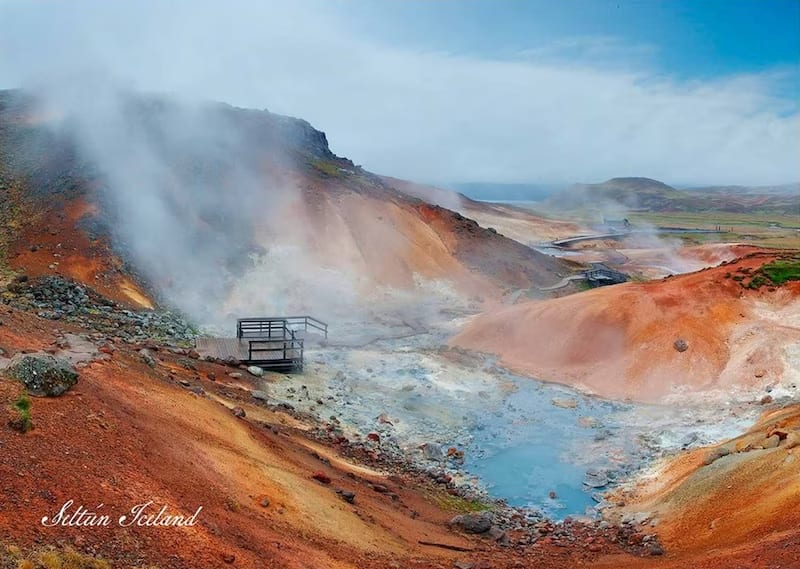
Sitting between North American and Euroasian tectonic plates, the Reykjanes Peninsula is in the vicinity of Iceland’s capital city, Reykjavik. A region famous for its unique landscapes and volcanic wonders, with the additional benefit that you can experience it all within a day.
Kleifarvatn Lake and Seltun Geothermal Area at Krýsuvík
The Kleifarvatn lake is a relatively underappreciated Icelandic wonder, this area is less visited because a lot of tourists don’t even realize it’s here, but it is equally as stunning as the most crowded of tourist hotspots. The serene blue body of water is the third largest of South Iceland and one of Iceland’s deepest.
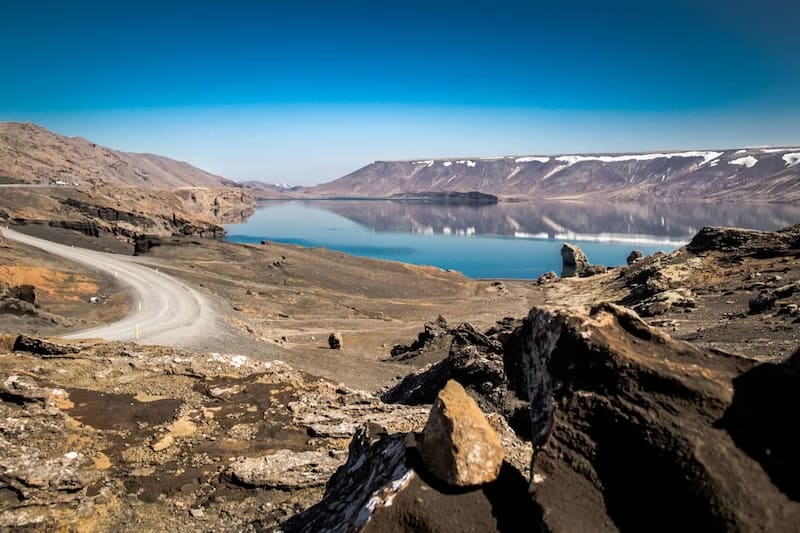
Closeby you will find a walking path into a colorful, active geothermal area Seltun. A local hiking spot of choice, Seltun is a place of rising steam and bubbling mud pools with a trail that leads all the way up the top of Mt. Sveifluhals, where you have a panoramic view of the entire area. A volcanic crater is filled with unusual green water, named **Graenavath **(green lake) and other small lakes are also found nearby.

In summer, the area is an idyllic paradise where Icelandic horses graze, while in winter it transforms into a moonlike terrain that outdoor-lovers wander. The incredible area is definitely living up to your unforgettable journey.
Reykjanes Lighthouse and Gunnuhver Geothermal Fields
At the southern tip of the Reykjanes Peninsula, you will find a beautiful white lighthouse overlooking the tranquil ocean. Built from 1907-1908, the historical structure is 26 meters (85 ft) high and almost 70 meters (225 ft) above sea level. It’s only a short walk up the hill to reach the lighthouse. In early summer, arctic terns come to this area to breed, chirp, and soar, awakening the peninsula from a long quiet snowy winter.
Nearby is Gunnuhver geothermal hot spring famous for Iceland’s largest mud pool, with a width of 20 meters (65 ft) inside of which the mud vigorously boils in a shade of muted blue.
This area is at the center of the Reykjanes UNESCO Global Geopark where you can explore some of the most iconic sights and scenes in Iceland.
Brimketill, the Lava Rock Pool Beneath a Cliff
The giant white waves crashing onto the cliffs are a famous sight at Brimketill. On a windy day, the waves can reach higher than 10 meters over the lava cliff. Be sure to follow the safety precautions and the paved path.
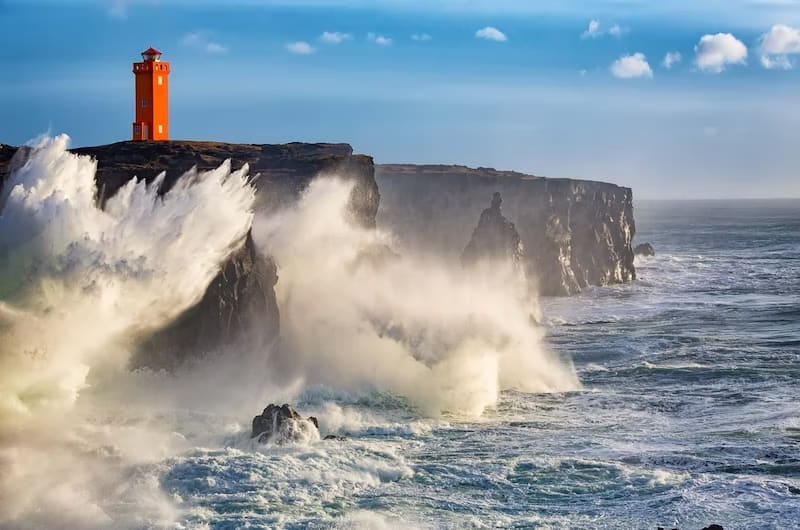
Carved by nature, Brimketill lava rock pool is just off the shore. Icelandic folklore says the pool is owned by a giantess named Oddny but despite its name, you can’t swim in this pool, as it can be very dangerous. It’s a preserved site where only nature is allowed to contribute to its appearance.
Krysuvikurberg Cliffs, One of Europe’s Longest Birdcliff
Stretching over 4km (2.5 miles) long with a peak of 60 meters (195ft), Krysuvikurberg Cliffs are an extensive line of colorful, layered lava cliffs, home to more than 50,000 migratory seabirds in the summer. You can even spot puffins if you are lucky. The best time of a year to visit Krysuvikurberg Cliffs is from May to September, which essentially applies to any birdwatching in Iceland.
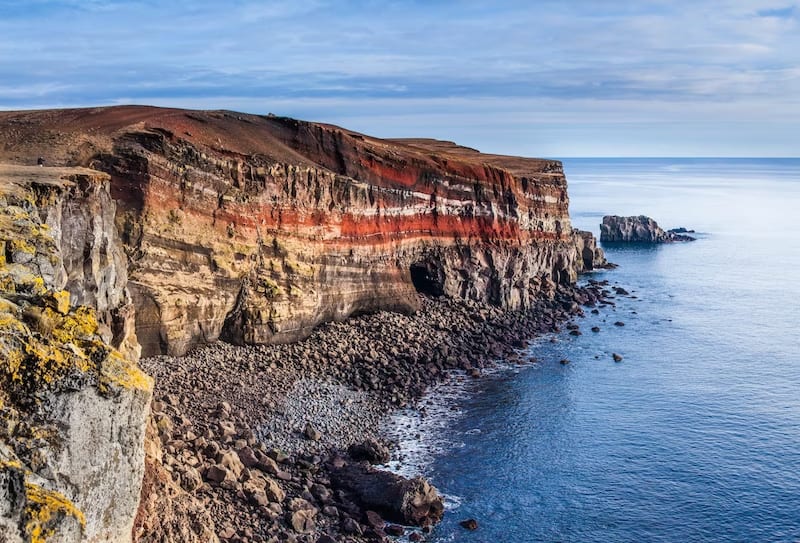
To reach the coast, you will need a very good vehicle, a 4X4 is highly recommended, as we are traveling on a dirt track that tends to form shallow muddy swamps in the summer, making the ride quite uncomfortable for smaller vehicles. In winter, a four-wheel drive is essential as it’s about 2km (1. mile) off the main road.
The Bridge Between Continents
As the geologically youngest country on the planet, Iceland is unique in many ways. It sits right on a plate boundary, north of the Mid-Atlantic Ridge, separating the North American and Euroasian tectonic plates. Although most of the ridge is submerged in the ocean, parts of it are exposed above sea level, and you can see them in Iceland.
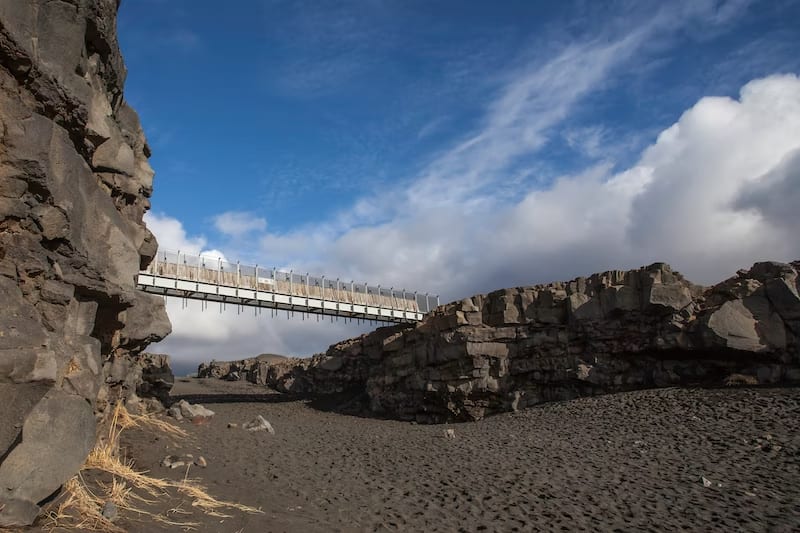
Besides the popular location at Thingvellir National Park on the Golden Circle Route, the ridge also created a valley in Reykjanes Peninsula, and the Bridge Between Continents was built to symbolize the geological significance.
Blue Lagoon, World’s Wonder with Soothing Water
A must visit, Blue Lagoon is a highlight on the Reykjanes Peninsula, only 20km (12miles) from Keflavik International Airport and a 40-minute drive from Reykjavik. National Geographic listed Blue Lagoon as one of Earth’s Most Awesome Places in 2012, and the wonder is for the water. It’s said that the mineral-rich geothermal spa has therapeutic properties, great for relaxing and rejuvenating.
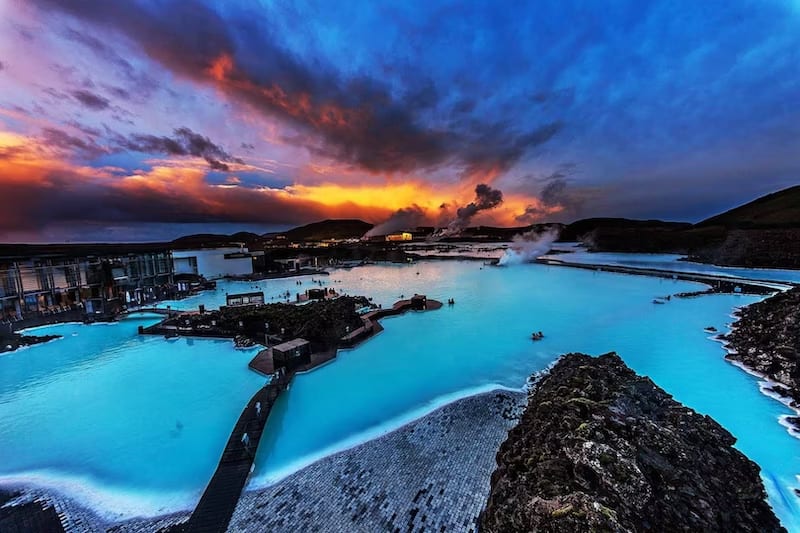
The Blue Lagoon has renovated over the years, and the current geothermal spa is a collection of beautiful structures with a great spa facility that has two luxury hotels, one with exclusive access to the Retreat Lagoon, two restaurants offering Nordic cuisine and gourmet food, a cafe for delicious snacks and refreshing beverages.
Other Highlights on Reykjanes Peninsula
From Reykjavik to Reykjanes, there’s a mountain visible along the drive in the shape of a perfect cone, that’s Mount Keilir. A local landmark, Keilir is a hyaloclastite mountain created during the ice age through a series of subglacial eruptions. The view on top is remarkable on good visibility days but to reach the summit, you will need a 4X4 to tackle the gravel road to the parking lot. From there it’s only a 3 km hike to the mountain.
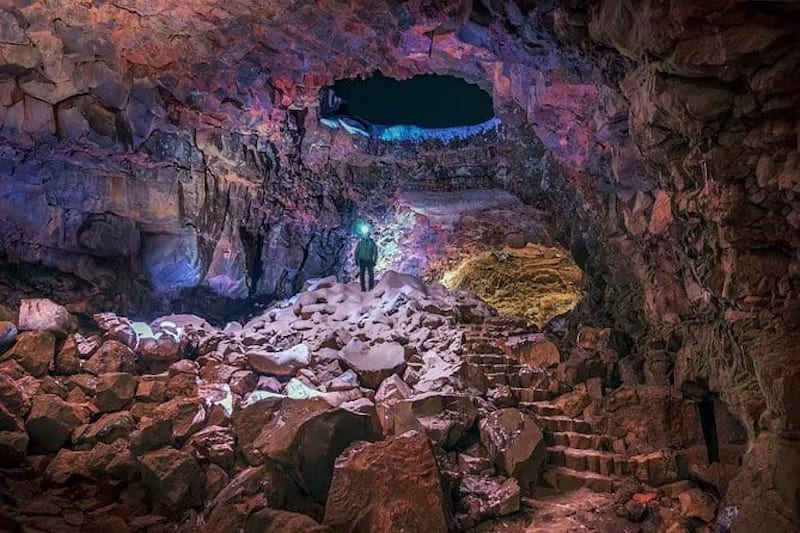
Raufarhólshellir is one of Iceland’s longest lava tunnels, located only a 30-minute drive from Reykjavik. Its brilliance extends from the sheer size to the magnificent multilayered appearances. The hike into the main lava tunnel is considered easy, as the path is paved and lit.
Eldey island is a small isle about 16 km (10 miles) off of Reykjanes’ coast. A sad tale for bird lovers, the last colony of an extremely rare species of Great Auks were wiped out in 1844, as the last remaining pair were killed by Icelandic sailors and a sailor accidentally cracked the very last egg on the planet. Although the species is no longer with us, the island is home to 16,000 pairs of gannets.
The Best Way to Visit The Reykjanes Peninsula
Reykjanes Peninsula’s diverse landscapes are best to be explored via a 4X4 vehicle or a super jeep, as some of the most stunning sites are on the end of a bumpy gravel road. Reykjanes Peninsula is a perfect destination for a day trip. The unique landscapes allow a scenic ride between attractions to be enjoyable and unforgettable and many visitors chose to finish the day off with a trip to the Blue Lagoon.
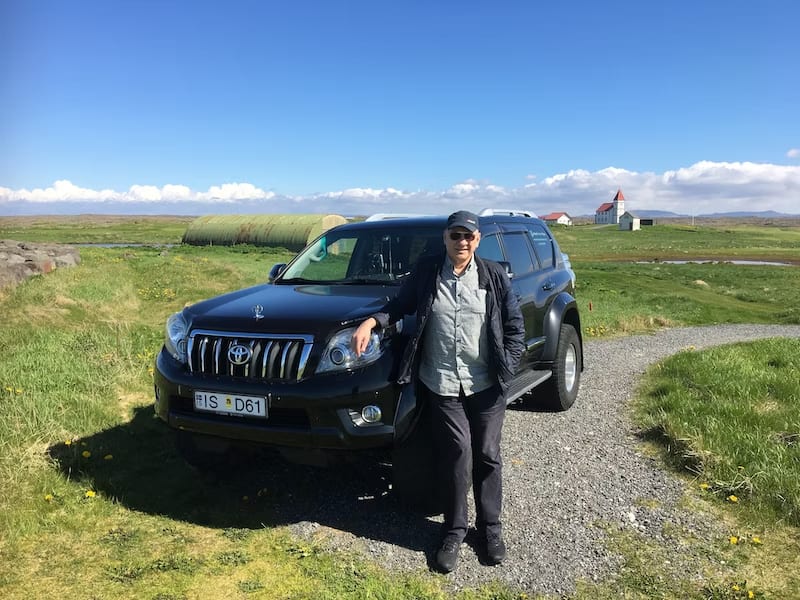
Looking for an adventure through the Reykjanes Peninsula? Sign up to our well-praised Reykjanes private super jeep tour, let our knowledgeable, professional guide take you there!